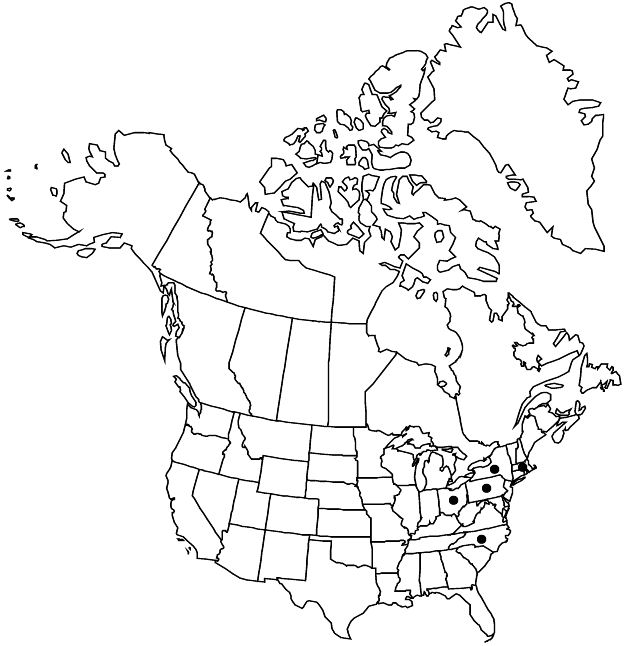Crataegus levis
Rhodora 7: 198. 1905.
Shrubs, 30–50 dm. Stems: twigs: new growth reddish, glabrous, 1-year old brown, older dark to paler gray; thorns on twigs straight to recurved, 2-years old shiny dark-brown, ± slender, 3–5 cm. Leaves: petiole 1.5–3 cm, pubescence not recorded, eglandular or sparsely glandular; blade ovate, 3–6 cm, very thin, base rounded or broadly cuneate, lobes 3 or 4 (or 5) per side, sinuses deep, angled, lobe apex at least proximal, not aligned, usually acuminate, margins serrate, proximal teeth gland-tipped, veins 4 or 5 per side, apex acute, abaxial surface glabrous, adaxial short-pubescent young, soon glabrescent. Inflorescences 5–8-flowered; branches glabrous; bracteoles absent or few, margins glandular. Flowers 15–17 mm diam.; hypanthium glabrous; sepals basally broadly triangular (lamina nearly linear), 6 mm, margins entire, abaxially glabrous; stamens 10, anthers rose-red; styles 4. Pomes red, ± pyriform, 8–10 mm diam., flesh hard; sepals spreading; pyrenes 4, dorsally grooved.
Phenology: Flowering Apr–May; fruiting Sep–Oct.
Habitat: Open woods, brush
Elevation: 50–300 m
Distribution

Mass., N.Y., N.C., Ohio, Pa.
Discussion
Crataegus levis ranges from the southern Great Lakes area to southern New England, to Ohio, Pennsylvania, and in mountains to North Carolina.
Crataegus levis is often confused with the C. compta form of C. populnea; that taxon usually has slightly larger, more coriaceous leaves, with less acute lobes than C. levis. Crataegus levis is possibly a hybrid of C. macrosperma × C. pruinosa.
Selected References
None.
Lower Taxa
"thin" is not a number."glabrous" is not a number."adnate" is not a number."dm" is not declared as a valid unit of measurement for this property.